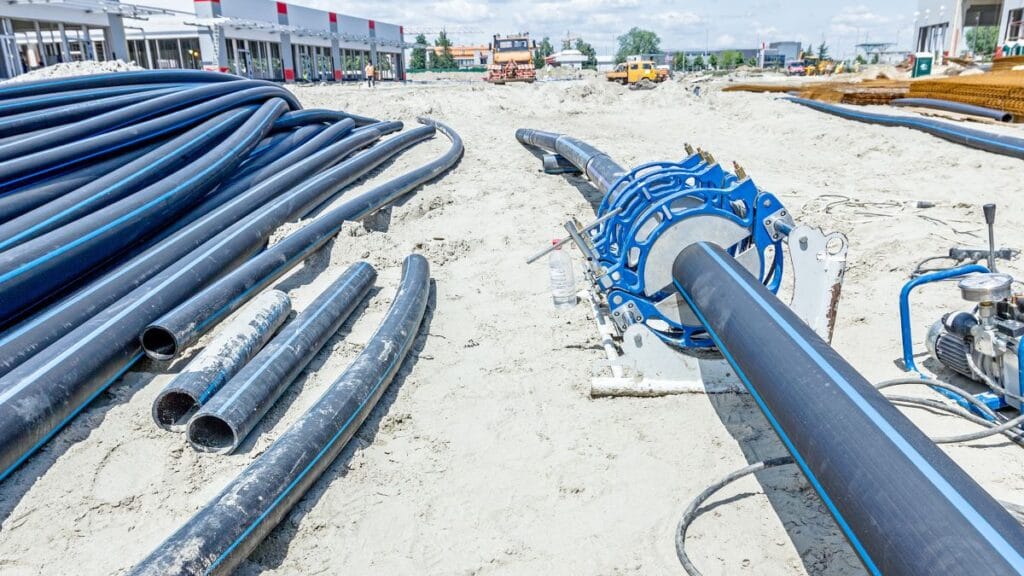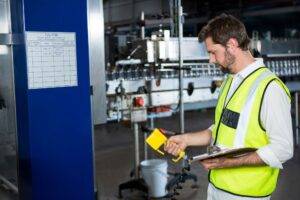High-density polyethylene (HDPE) pipes are among the most versatile and reliable piping solutions used across industries. Known for their durability, flexibility, and chemical resistance, HDPE pipes have become a preferred choice in applications ranging from water distribution to industrial fluid handling. One of the most critical factors to consider when using HDPE pipes is their temperature ratings. This article delves into HDPE pipe temperature ratings, performance across temperature ranges, and practical considerations for real-world applications.
1. HDPE Basics: Why It Works

HDPE, or high-density polyethylene, is a thermoplastic polymer known for its high strength-to-density ratio. These pipes are lightweight yet strong, resistant to corrosion, and have excellent chemical tolerance. These properties make HDPE pipes ideal for diverse applications, including potable water systems, gas pipelines, and drainage.
Key Benefits of HDPE Pipes:
- Durability: HDPE pipes can withstand impacts and stress without cracking.
- Flexibility: Their flexibility allows for installation in challenging terrains and seismic zones.
- Corrosion Resistance: Unlike metal pipes, HDPE pipes are resistant to rust and chemical degradation.
- Leak-Free Joints: Fusion welding creates leak-proof connections, ensuring operational reliability.
These features contribute to the popularity of HDPE pipes across various industries.
2. A Closer Look at HDPE Pipe Temperature Ratings
The temperature rating of an HDPE pipe indicates the temperature range within which the pipe can operate safely. These ratings are critical for ensuring the pipe’s structural integrity and performance in specific applications.
HDPE pipes are generally rated for temperatures ranging from -40°C to 60°C (-40°F to 140°F). This wide range makes them suitable for both cold and moderately hot environments. However, their performance can vary based on factors like pipe grade, wall thickness, and the type of fluid being transported.
3. How HDPE Pipes Perform Across Various Temperature Ranges
HDPE pipes handle varying temperatures efficiently, ensuring durability and reliability.
Low-Temperature Performance:
HDPE pipes excel in low-temperature environments. Their flexibility increases as the temperature drops, making them resistant to brittleness and cracks. For this reason, HDPE pipes are widely used in cold climates for transporting water and gas.
High-Temperature Performance:
At higher temperatures, HDPE pipes may experience reduced strength and rigidity. Prolonged exposure to temperatures above the rated limit can lead to deformation and potential failure. To mitigate these risks, careful material selection and design adjustments are essential for high-temperature applications.
4. Operating Limits: Maximum and Minimum Temperatures for HDPE Pipes
HDPE pipes operate within defined temperature limits for safety and performance.
Maximum Operating Temperature:
The maximum recommended operating temperature for standard HDPE pipes is 60°C (140°F). Beyond this point, the material may begin to soften, leading to reduced pressure-handling capacity and potential deformation. For applications requiring higher temperature resistance, special HDPE formulations or alternative materials may be needed.
Minimum Operating Temperature:
HDPE pipes can safely operate at temperatures as low as -40°C (-40°F) without compromising structural integrity. At these temperatures, the pipes remain flexible and resistant to cracking, making them ideal for extreme cold weather conditions.
5. Critical Factors Affecting HDPE Pipe Temperature Ratings
Several factors influence how HDPE pipes behave under different temperature conditions. Understanding these factors helps in selecting the right pipe for specific applications:
Pipe Grade and Material Composition:
Higher-grade HDPE materials may offer better temperature resistance and pressure-handling capabilities. Specialized formulations can extend the operational range of HDPE pipes.
Pipe Wall Thickness:
Thicker-walled pipes generally offer better resistance to high temperatures and pressure. Thin-walled pipes are more susceptible to deformation under heat.
Duration of Temperature Exposure:
Continuous exposure to high temperatures can degrade the material over time. Intermittent or short-term exposure may have less impact.
Fluid Properties:
The type of fluid transported also affects the temperature tolerance of HDPE pipes. Aggressive or chemically reactive fluids may require special pipe linings or coatings to prevent damage.
Environmental Conditions:
External factors, such as sunlight and ambient temperature, can affect HDPE pipes. UV stabilizers are often added to pipes used in outdoor installations to prevent degradation from sunlight exposure.
6. Real-World Applications: HDPE Pipes in Challenging Temperature Conditions
HDPE pipes are used in a variety of industries where temperature resistance is critical. Below are some real-world examples:
Cold Climate Installations:
HDPE pipes are widely used in Arctic and sub-Arctic regions for water and gas distribution. Their ability to remain flexible and resist cracking in freezing temperatures makes them a reliable choice.
Industrial Fluid Transport:
In chemical plants and industrial facilities, HDPE pipes transport hot fluids and chemicals. Special grades of HDPE are used in applications where higher temperature resistance is required.
Mining Operations:
HDPE pipes are favored in mining for their ability to withstand abrasive materials and variable temperatures. They are used to transport slurry and tailings in both hot and cold conditions.
Irrigation Systems:
In agricultural irrigation, HDPE pipes are exposed to fluctuating temperatures and direct sunlight. UV-resistant HDPE pipes ensure durability and long-term performance.
Conclusion
HDPE pipes have revolutionized fluid transport across industries due to their versatility, durability, and cost-effectiveness. Understanding their temperature ratings and behavior in different conditions is essential for ensuring reliable performance and longevity.
When selecting HDPE pipes for a project, consider factors like material grade, wall thickness, and environmental conditions. For applications in extreme temperatures, consult with manufacturers to ensure the pipes meet specific requirements.
By choosing the right HDPE pipe and maintaining proper operational practices, industries can benefit from a piping solution that delivers exceptional performance, even in the most challenging environments.
Practical Insights for Professionals
Installation Best Practices
- Anchor Points and Expansion Loops: Use anchor points and expansion loops to manage thermal expansion and contraction.
- Trench Depth: Ensure adequate trench depth to provide insulation against temperature extremes.
- Fitting Selection: Choose fittings compatible with HDPE pipes and rated for the expected temperature range.
Performance Monitoring
- Regular Inspections: Conduct regular inspections to check for signs of thermal stress or damage.
- Temperature Monitoring: Implement temperature monitoring systems to track fluctuations and their impact on HDPE pipes.
Material Selection
- Appropriate Grade: Select the appropriate HDPE grade for the specific temperature conditions of your project.
- UV Protection: For outdoor installations, use UV-stabilized HDPE pipes to prevent degradation due to sunlight exposure.
Temperature Effects on HDPE Pipes
- Thermal Expansion and Contraction: HDPE pipes undergo significant expansion and contraction with changes in temperature. This behavior needs to be taken into account during installation to avoid problems like buckling or separation at the joints. It is advisable for professionals to use expansion joints or other methods to manage these temperature-induced changes.
- Strength and Durability: When exposed to high temperatures, HDPE pipes can soften and lose some of their structural integrity. On the other hand, at very low temperatures, they tend to become more rigid and brittle. It is essential to understand the temperature range of the installation site to choose the right grade of HDPE pipe and ensure its long-term effectiveness.
- Chemical Resistance: One of the standout features of HDPE pipes is their ability to resist a wide variety of chemicals. This resistance remains stable across different temperatures, making HDPE pipes a reliable choice for applications that involve harsh chemicals, even when temperatures fluctuate.










